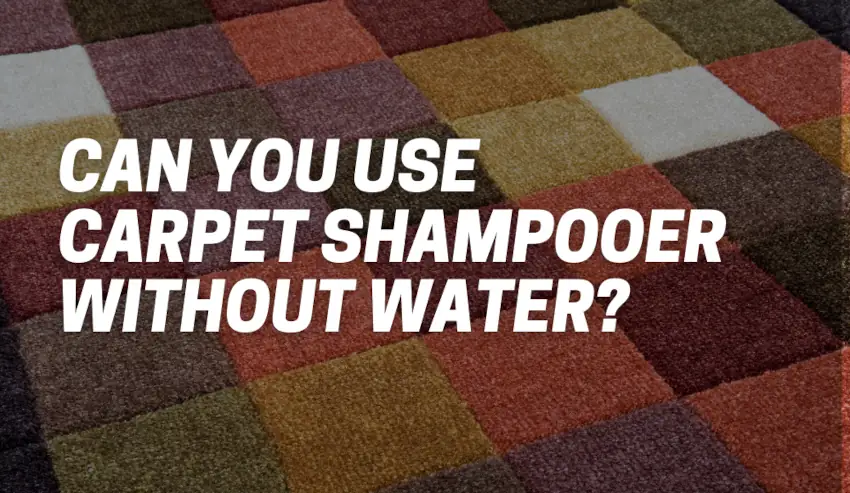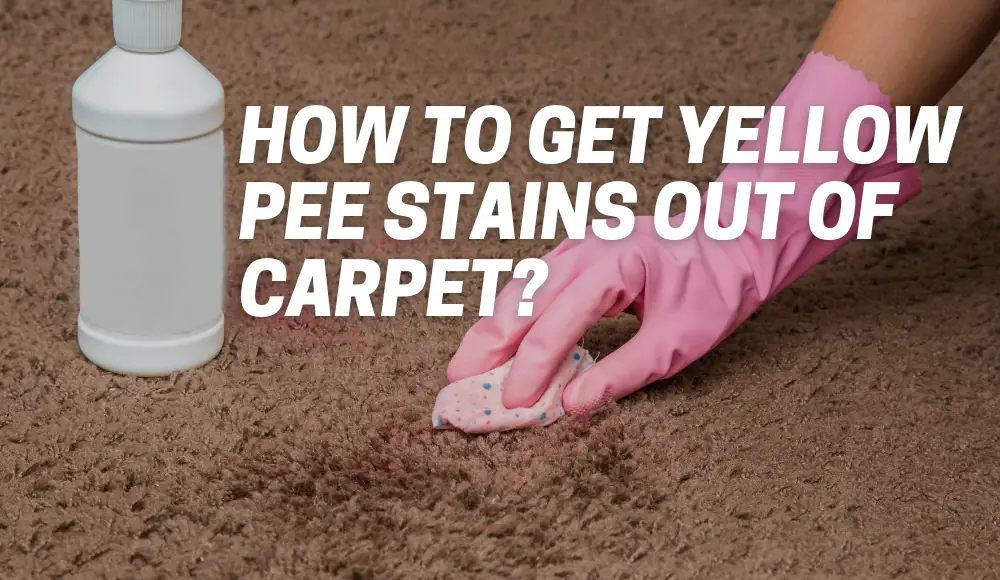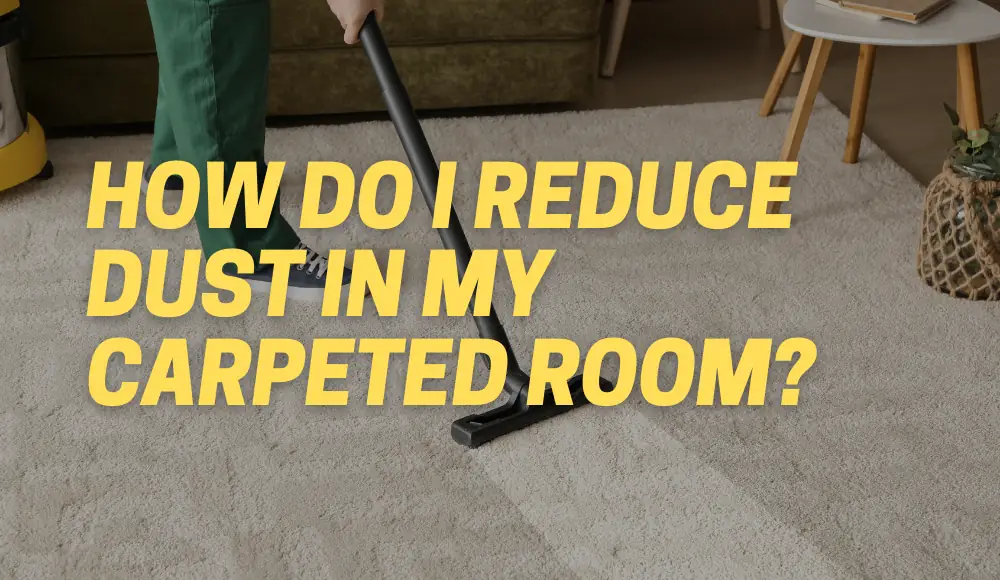Last updated on November 2nd, 2023 at 01:01 am
When it comes to keeping our carpets clean and fresh, the trusty carpet shampooer often comes to the rescue. But have you ever wondered if you can use a carpet shampooer without water?
In this article, we’ll explore the fascinating world of carpet shampooers, how they work, and whether they can be used without water.
So, let’s dive in and discover the ins and outs of this cleaning marvel.
What is a Carpet Shampooer?
First things first.
A carpet shampooer, also known as a carpet cleaner or carpet extractor, is a remarkable machine that helps restore the cleanliness and beauty of your carpets.
It is specifically designed to deep clean carpets by injecting a mixture of water and cleaning solution into the carpet fibers. By doing so, it loosens dirt, grime, and stains from deep within the carpet, leaving it fresh and rejuvenated.
How Does a Carpet Shampooer Work?
Carpet shampooers, or carpet cleaners, operate on a simple yet effective principle.
First, the machine sprays a mixture of water and cleaning solution onto the carpet surface. This solution penetrates the carpet fibers, reaching the root of the dirt and stains.
Once the solution has had a chance to work its magic, the shampooer uses brushes or agitators to scrub the carpet and loosen any embedded debris.
Next, the machine’s powerful suction mechanism kicks in. It extracts the dirty water, along with the dissolved dirt and cleaning solution, back into the machine’s reservoir.
This process effectively removes dirt and grime, leaving behind cleaner and fresher carpets. Some advanced carpet shampooers may also incorporate additional features like heat and steam for enhanced cleaning performance.
Are There Any Specific Carpet Types or Materials That Should Not Be Cleaned with Water?
While water is generally safe for most carpets, certain carpet types or materials require special care and may not be suitable for traditional water-based cleaning methods.
For instance, delicate antique or silk carpets should be treated with utmost caution and may require professional cleaning techniques.
Additionally, carpets with natural fibers like jute or sisal can shrink or become distorted when exposed to excessive moisture.
It’s crucial to check the manufacturer’s guidelines or consult a professional before using a carpet shampooer on such carpets. Similarly, carpets with water-sensitive backings, such as certain types of laminate or hardwood, should be protected from excess moisture to prevent damage.
Can I Use Carpet Cleaner Without Water?
Using a carpet cleaner without water is possible through alternative cleaning methods, such as dry cleaning. Dry cleaning involves using specialized compounds or foam that are applied to the carpet and then agitated to remove dirt and stains.
The compounds or foam encapsulate the dirt, allowing it to be vacuumed away without the need for water. This method is convenient for quick cleaning or spot treatments. Also, to prevent the growth of mold and mildew, it is advised to opt for dry sanitization methods.
However, it’s important to note that dry cleaning may not provide the same level of deep cleaning as water-based methods, especially for heavily soiled carpets.
It’s recommended to check the manufacturer’s instructions and consider the specific cleaning needs of your carpet before using a carpet cleaner without water.
Can You Use a Carpet Shampooer Without Water? User Advice
While carpet shampooers are primarily designed to work with water, there are alternatives available that offer waterless or low-moisture cleaning methods.
These specialized carpet cleaning solutions can be used without water and can be a convenient option for those who want to avoid excessive moisture on their carpets.
| Main Points |
|---|
| A carpet shampooer can suck water from a carpet. |
| However, it may not be able to remove water from saturated carpets caused by floods, broken pipes, or hoses. |
| Carpet shampooers are designed to extract water from the carpet itself, but not from the carpet pad. |
| If the carpet pad is wet, serious problems like mold, mildew, and water seeping into drywall can occur. |
| Remedying water damage in the carpet pad may involve removing the carpet and pad, as well as drying out the surrounding areas. |
| Professional assistance may be necessary for proper water damage restoration. |
| Having separate flood insurance or water damage policy is worth considering for potential water damage incidents. |
When using a waterless carpet shampooer, it’s essential to follow the manufacturer’s instructions carefully.
Typically, these machines utilize dry cleaning compounds or foam that are spread onto the carpet surface.
The compounds or foam work by encapsulating the dirt and stains, which can then be vacuumed away. This method allows for effective cleaning while minimizing the risk of over-wetting the carpet.
How Effective Is Dry Cleaning with a Carpet Shampooer That Doesn’t Require Water?
Dry cleaning with a waterless carpet cleaner can be a highly effective cleaning method, especially for routine maintenance or for areas that require quick drying times.
These machines often utilize powerful brushes or pads that agitate the dry cleaning compounds, ensuring thorough cleaning of the carpet fibers.
However, it’s important to note that while dry cleaning can remove surface dirt and stains effectively, it may not provide the same level of deep cleaning as water-based methods.
Stubborn or deeply embedded stains may require the additional power of water-based extraction methods. Nonetheless, for regular upkeep and light cleaning, a waterless carpet shampooer can be a practical and efficient solution.
Can I Use a Carpet Shampooer on Dry Carpets?
Yes, you can use a carpet shampooer on dry carpets, especially when employing a waterless cleaning method. Dry carpets are ideal for dry cleaning techniques as they absorb the cleaning compounds more effectively. This allows the cleaning solution to work its magic on the carpet fibers without the need for additional moisture. However, always check the manufacturer’s guidelines to ensure that the specific carpet shampooer you are using is suitable for dry carpet cleaning.
Pros and Cons of Using a Waterless Carpet Shampooer
Pros:
- Quick drying times: Waterless carpet shampooers allow for faster drying times, enabling you to resume using your carpets sooner.
- Convenience: The absence of water eliminates the need for extensive drying or airing out of carpets.
- Versatility: Dry cleaning methods are suitable for a variety of carpet types, including delicate or moisture-sensitive carpets.
- Spot cleaning: Waterless carpet shampooers are excellent for tackling localized stains or spills, providing a targeted cleaning solution.
Cons:
- Limited deep cleaning: Dry cleaning methods may not be as effective at removing deeply embedded dirt or tough stains as water-based extraction methods.
- Less effective on heavily soiled carpets: For heavily soiled carpets, a water-based extraction method may be more suitable to achieve thorough cleaning results.
Conclusion
While water-based carpet shampooers are the most common and effective way to deep clean carpets, there are alternatives available that allow for waterless or low-moisture cleaning methods.
Dry cleaning with a waterless carpet shampooer can be a practical and efficient solution for routine maintenance and quick spot cleaning.
However, for heavily soiled carpets or deep cleaning requirements, water-based extraction methods may still be necessary. Always consider the specific needs and recommendations of your carpet type before choosing a cleaning method.
Remember, keeping your carpets clean not only enhances the aesthetics of your home but also contributes to a healthier living environment. With the right carpet shampooer and cleaning approach, you can enjoy fresh and vibrant carpets for years to come.



